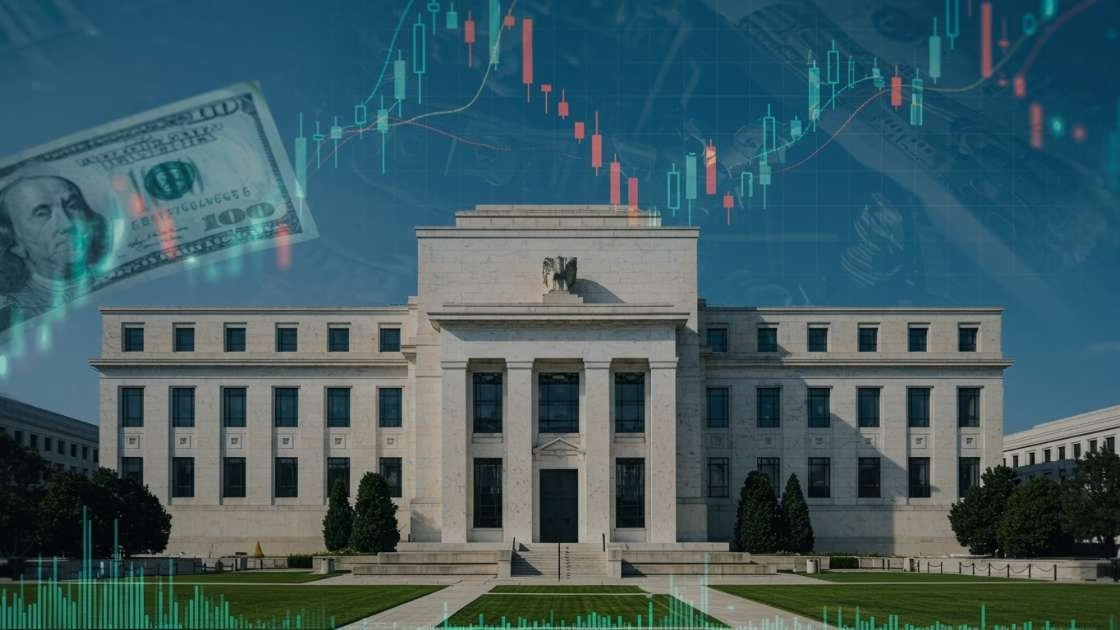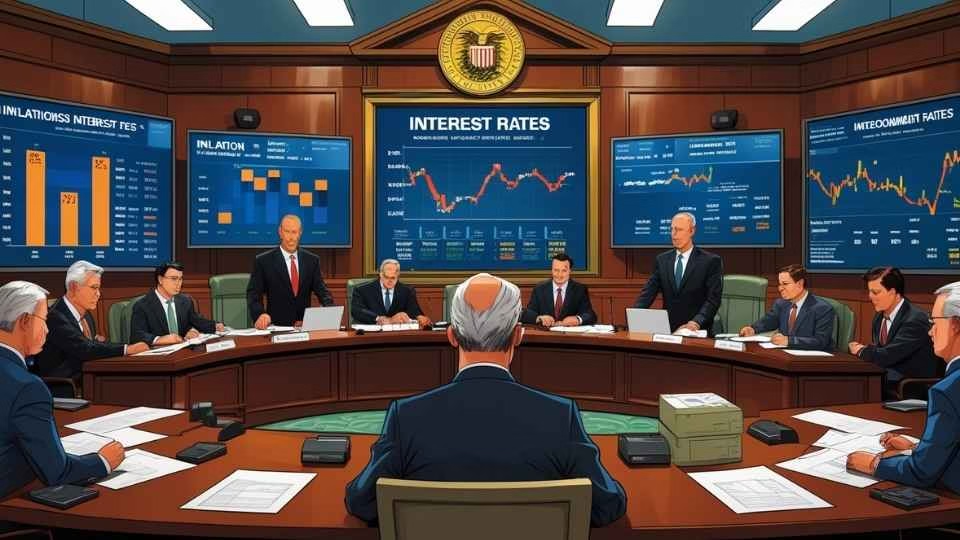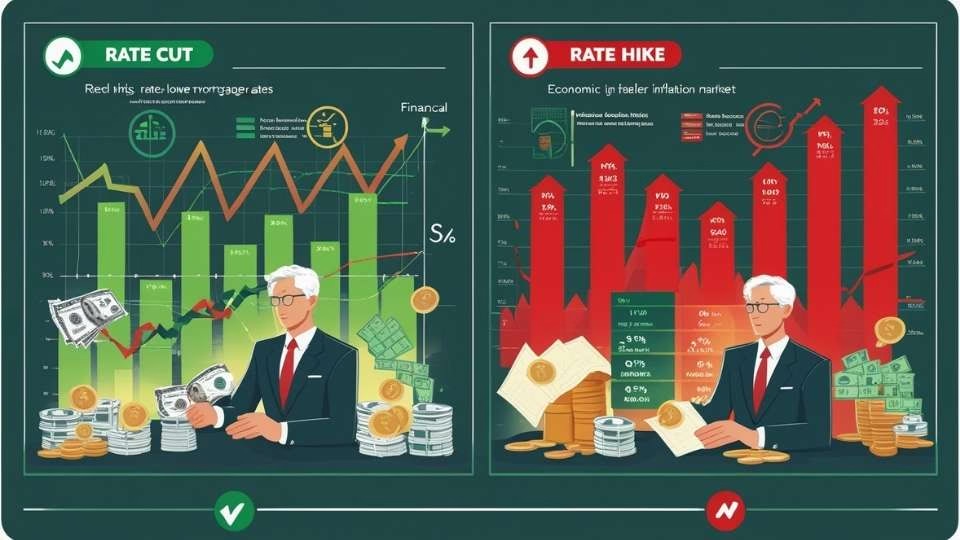Compared to other things, the Federal Reserve’s interest rates have the most impact on the economy of the United States. As a consumer, business owner or an investor, you have probably heard of these rates; but do you understand them in detail and how they work and affect you?
This article will cover everything you need to know about Federal Reserve’s interest rates in the US, why they are important and how they affect different components of your financial life. The Federal Reserve as of January 29, 2025, has kept its interest rates within the range of 4.25% to 4.5%.
What You Learn Today
- The current Federal Reserve’s interest rate sits at 4.25% to 4.5% range.
- This rate impacts the interest rates charged by banks to individuals and corporate entities.
- The purpose of this decision by the Fed is to create a equilibria between economic growth and inflation.
- The next FOMC meeting is scheduled on March 17, 2025.
- Factors such as inflation and employment will determine further revisions of rate policies.
What Are Federal Reserve Interest Rates?
Federal Reserve interest rates are the rates charged on interbank loans to the banks for short term periods, typically a day. The Federal Reserve, which is generally called Fed, utilizes these rates to control the economy of the nation.
The Federal Reserve formulates two particular types of interest rates, which include:
- Federal Funds Rate: This is a category of interest rates that is charged by commercial banks on money that is lent to other commercial banks.
- Discount Rate: This is a category of Modern interest rates that is charged when banks request for loans from the Federal Reserve banks.
Both of these rates play critical roles in the economy of the nation, ranging from individual loans to corporate investments.
Why Do Federal Reserve Interest Rates Matter?
Any action taken by the Federal Reserve has significant economic implications. As a result, when the Federal Reserve modifies its rates, this action influences the cost of money. This translates to spending by consumers, investment from business, and expansion of the economy as a whole.
- Low Interest Rates: The period whereby rates of interest are below normal is also classified as a time of economic depression. Spending overrides income, forcing such consumers to seek loans.
- High Interest Rates: Such periods encompass where the Fed increases interest rates, thereby improving borrowing conditions from the consumers alongside boosting saving causing the economy to expand.
How Does the Federal Reserve Set Interest Rates?
The Federal Open Market Committee (FOMC)
The FOMC is the committee that is responsible for making the decisions regarding changes in the interest rates in the Federal Reserve. The committee typically meets every six weeks where they access the state of the economy and then make a decision to raise, lower, or maintain the interest rates.
A wide range of economic indicators influence their decision:
- Inflation rates
- Employment levels
- Economic growth data
Inflation and Employment
Employment and inflation are the two most critical metrics that the Federal Reserve uses to make decisions regarding the rate changes. For example:
- Rising Inflation: In most cases where inflation is high the Fed typically raises the interest rates to slow down the economy and control the rising prices.
- Low Employment: In a case where unemployment is high the Fed typically decided to lower the interest rates which subsequently encourages businesses to borrow and hire more workers.
How Federal Reserve Interest Rates Affect Consumers
Impact on Loans and Mortgages
The Federal Reserve control interest rates that affect the interest on mortgages, auto loans, and credit cards. Here is how it works:
- Low Rates: For instance when the interest rates are low, loans are easier to service as well as cheaper to obtain. This consequently lowers the monthly payments on mortgage and loans.
- High Rates: An increase in the interest equates to an increase in the cost of borrowing money. As a result, borrowers will have to pay more on a monthly basis towards loan, mortgage, and credit card payments.
Impact on Savings Accounts and Investments
The interest level always determines the rate of return on savings. Higher rates means higher returns on saving accounts and CDs (Certificates of Deposit) while lower rates means lesser interest on savings which makes it difficult to increase savings.
How Federal Reserve Interest Rates Affect Businesses
Business Loans and Credit
Business activities are affected by changes in the interest rate and these changes have differing magnitudes of effects. If there is a rise in the Fed interest rate, the costs of funds for expansion or for operational needs increases. However, it can be an advantage during the economic downturn for companies that have access to debt.
- Lower Interest Rates: Lead to greater demand for loans by business which improves investment, growth, and employment numbers.
Stock Market Influence
Interest rate changes affect the stock market directly. Investors often divest from risky assets, for example, stocks when the Fed increases rates because the cost of borrowing money rises. With lower rates, there is often higher activity in the stock market as people begin to invest more in return seeking assets.
How Federal Reserve Interest Rates Impact the Housing Market
Mortgage Rates and Home Buying
Interest rates have a significant impact on the housing market. Higher interest rates set by the Fed causes a domino effect that leads to higher mortgage rates, which makes purchasing a home costlier. This consequence inhibits the housing market as many potential customers postpone their purchases and wait for rates to drop.
Impact on Homeowners
- Refinancing: The changes in interest rates by the Federal Reserve has an impact on mortgage holders. If the Fed lowers the rate, owning a home becomes more appealing since the interest on the mortgage would be lower with the reverse being true for the opposite scenario.
Federal Reserve Interest Rates and the Global Economy
Impact on the U.S. Dollar
As it is now clearer what consequences the changing of interest rates by the Federal Reserve has, it is appropriate to analyze how purchasing power and the rate of inflation for example are affected by this. With that in mind, it can be noted that once the Fed increases rates, the dollar strengthens.
A stronger currency is beneficial when importing goods, however, it makes exporting much more expensive for other countries.
Global Trade and Investment
Countries across the world tend to keep track of US interest rate changes, not only because it gives an idea about inflation and economic growth but also because it correlates with:
- Currency exchange
- Foreign investment
FOMC’s Decision-Making Process
How the FOMC Decides Rates
But how does the FOMC function? It integrates the most recent economic analysis that incorporates obstacles like inflation, employment opportunities, and economic growth. Outlined below is the process behind it:
- Economic Data Review: The recent data collected for rate change FOMC discussions is focused on inflation, employment opportunities, GDP growth rate, and so forth.
- Policy Discussion: Possible rate change is discussed converging on the existing macroeconomic conditions.
- Rate Announcement: The committee meets, discusses denotes their decision to either raise, lower, or keep interest rates at the same level.
The Effects of Low and High Interest Rates on the Economy
Low Interest Rates: Economic Growth
Expansionary rates are useful in generating economic growth. This is typically the case when the Fed strives to keep interest rates low; it is likely to encourage economic growth. The key expenses with low rates are:
- Consumer spending
- Demand for loans
- Business investments
High Interest Rates: Inflation Control
Low expansionary rates are also tied to higher inflation control rates. The Fed moves using expansionary rates in response to high inflation. Higher rates make borrowing more expensive, which helps cool the economy and inflation.
Understanding Interest Rate Cuts and Hikes
Interest Rate Cuts: When and Why
In regard to the interest rate cuts, the Fed may consider doing them due to:
- Weak economic development
- Minimal inflation
- Significantly high unemployment
Interest Rate Hikes: When and Why
Interest rates may also increase in order to:
- Control inflation
- Prevent economic overheating
Navigating Federal Reserve Interest Rates: Practical Tips
For Consumers
- Refinance Your Loans: Considering refinancing your home mortgage or loans when interest rates are low may help save money.
- Save Wisely: In cases where rates are high, lock-in savings accounts such as long terms CDs.
For Businesses
- Plan for Higher Costs: In cases where rates are anticipated to increase, consider locking-in financing instead of waiting to borrow when rates increase.
- Invest in Growth: Low rates are a great opportunity for a business to expand. So invest in growth.
Looking Ahead: Future Federal Reserve Interest Rate Predictions
What’s Next for Interest Rates?
Federal Reserve Policy decisions are critical in the continuously developing U.S. economy. While it is difficult to speculate what the Fed’s decisions are, experts state that the following factors will affect the future rates:
- Inflation rates: If inflation rises, the Fed may increase the interest rates.
- Unemployment: The Fed may lower rates to increase job opportunities if the unemployment rate is high.
My Opinion
Enlightenment on the Federal Reserve’s interest rates in the USA is useful especially if one intends to understand or maneuver around the economy. Consumers trying to make economic choices use this while business people are always strategically calculating their next steps. Interest rate changes will help you make the proper decisions to safeguard your financial future.
As usual, one must constantly watch the announcements from the Federal Reserve and adjust their plans. You are strongly encouraged to strategize on interest rate changes as it will greatly impact your finances.











Leave a Reply